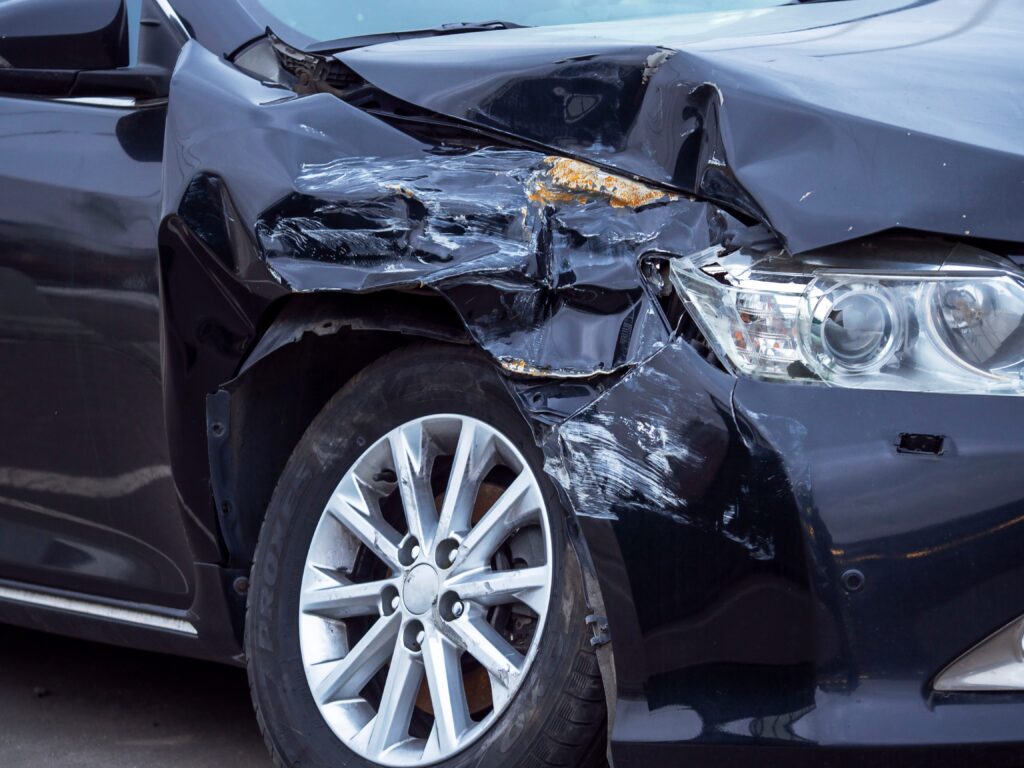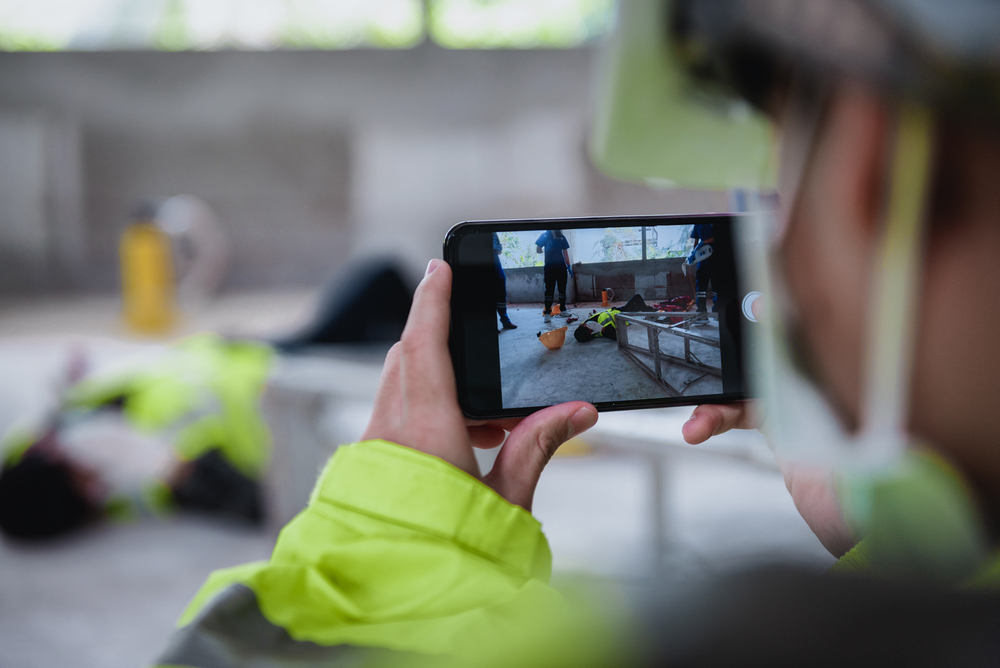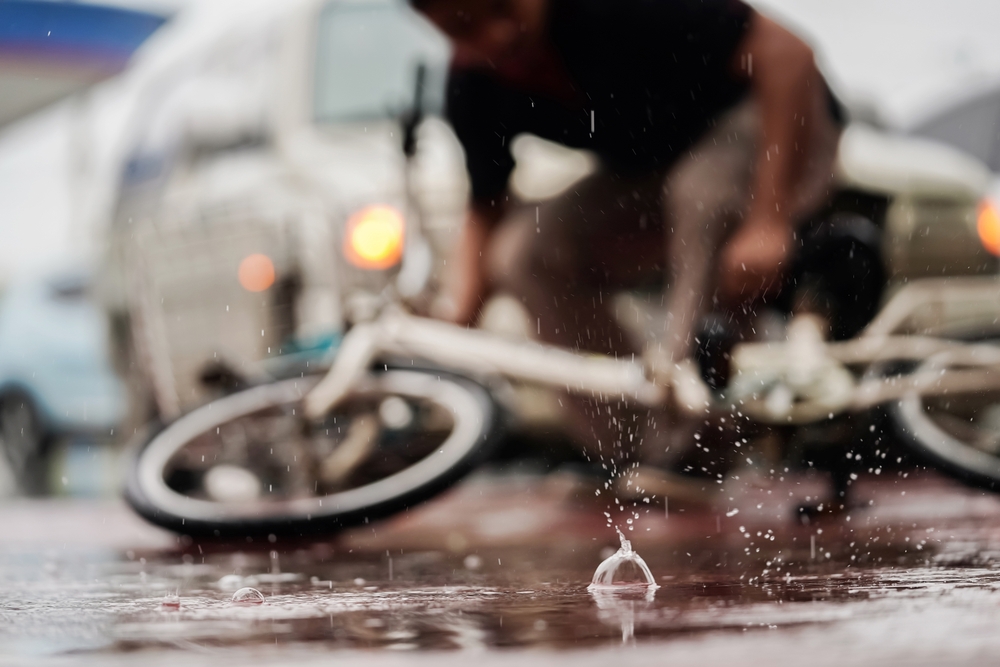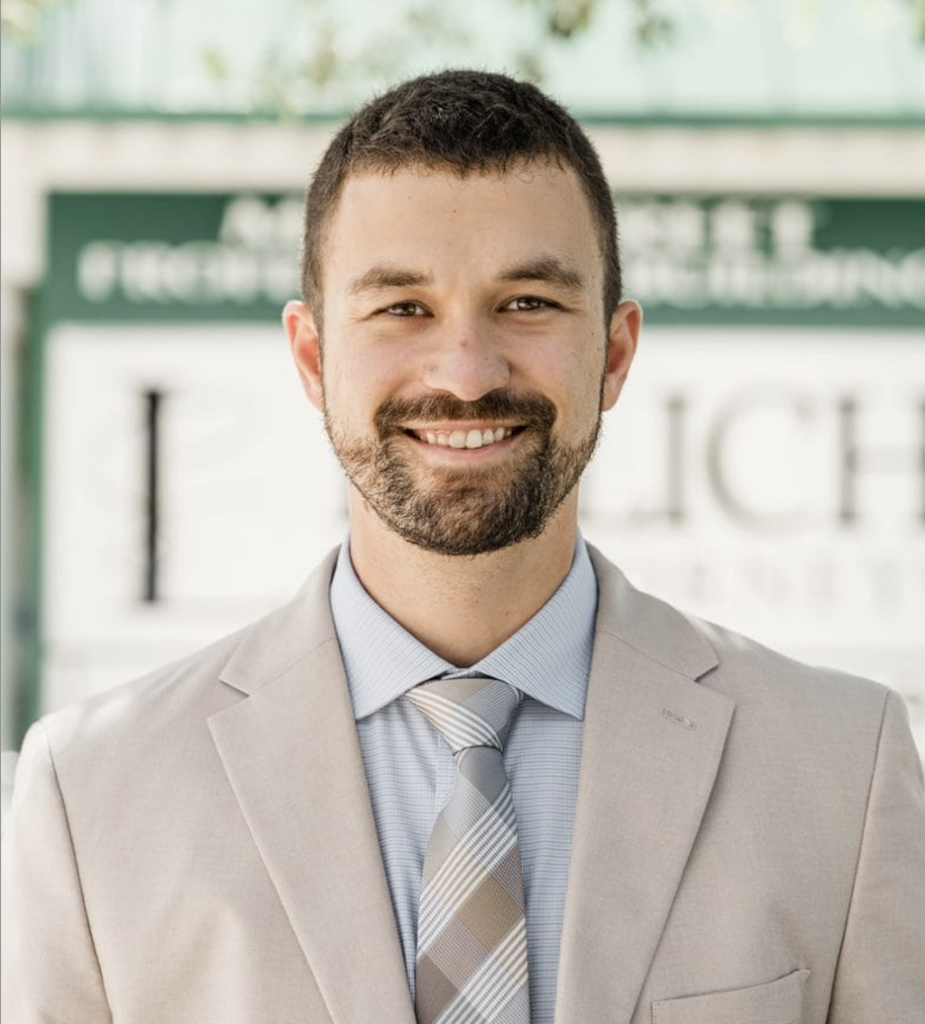After a car accident, emotions run high, and the immediate focus is, understandably, on the safety and well-being of those involved.
However, once the dust settles, a question remains: who was at fault? While it might seem straightforward at first glance, pinning down liability in a car accident is often a multi-step process full of evidence, witness statements, and sometimes, even the courtroom.

When determining liability, a long list of factors comes into play.
Was a particular traffic rule broken? Did external influences, like bad weather, play a role? Does the damage to the vehicles offer any clues?
Accurate fault determination is the foundation for insurance claims and potential legal proceedings. Liability determines who pays for damages, whether it's vehicle repairs or medical bills. For the person deemed at fault, this can mean higher insurance premiums in the future or even potential legal ramifications, especially if the accident resulted in significant injuries or damages.
Beyond the financial implications, there's also the matter of justice and fairness. After all, it's human nature to seek accountability and ensure that people face consequences for their actions, especially if negligence is involved.
In this guide, we'll go through the steps of this process, offering clarity on how to tell who is at fault in a car accident. The best way to know who to blame for your collision and injuries is to consult an experienced Vero Beach car accident lawyer immediately.
Schedule A Consultation Today!
Police and Crash Reports
When a car accident occurs, the police are often among the first to arrive on the scene. Their presence isn't just for crowd control or traffic management; they play a role in the initial stages of fault determination, which begins with drafting a crash report.
At its core, a police report serves as an official record of an accident documented by a law enforcement officer. In the context of car accidents, it provides a snapshot of the scene, the parties involved, and the circumstances leading up to the collision.
Typically, a police report will detail:
- The Date, Time, and Location: This sets the stage, providing context to the incident.
- Parties Involved: This includes the drivers, passengers, pedestrians, or any other impacted parties.
- Vehicle Descriptions: The make, model, color, license plate numbers, and any visible damages.
- Witness Statements: Bystanders or other third parties might include their accounts if they witnessed the accident.
- Diagram of the Scene: Some reports come with sketches detailing the positioning of the vehicles, direction of travel, and other relevant scene markers.
- Citations or Violations: Relevant citations will be issued if any broken traffic rules cause the accident.
- Officer's Narrative: This is a descriptive account, where the officer provides observations and sometimes even an opinion on how the accident might have happened.
It's worth noting that while police officers can provide an initial opinion on fault—often based on visible evidence and traffic violations—it's not the final word on the matter. For instance, an officer might note that one driver ran a red light, leading to an accident, which strongly indicates who is at fault. However, other details, which might emerge later, can influence the final determination.
Physical Evidence
The dents, scratches, and crumpled parts of the involved vehicles can often hint at the accident's nature.
- Location of Damage: Was the impact on the vehicle's front, rear, or side? Frontal damages might suggest head-on collisions or one car rear-ending another. Side damages can indicate T-bone collisions, often occurring at intersections.
- Severity and Pattern of Damage: Minor scratches imply a low-speed collision, while large dents suggest higher speeds. The damage pattern can also reveal if a car was stationary or moving during the impact.
- Paint Transfers: These can be particularly revealing. If the blue car has a streak of red paint from another vehicle, it offers clues about the point of contact and the involved cars.
The type of collision that happened can often help in determining fault.
Road Marks
The road often has marks that provide clues to the vehicles' actions before and during the collision.
- Skid Marks: These are tell-tale signs of a vehicle trying to brake hard and suddenly. The length and direction of skid marks can indicate the vehicle's speed and direction before the collision. They might also reveal if a car was trying to swerve to avoid the crash.
- Yaw Marks: Different from skid marks, tires that are still rotating but simultaneously sliding sideways cause yaw marks and are often seen in cases where vehicles try to take a turn too quickly.
- Gouges and Scrapes: Deep gouges in the road might result from a vehicle's parts digging into the pavement during a crash, suggesting the collision's force. These can also help determine the point of initial impact.
- Debris Pattern: The spread of shattered glass, vehicle parts, or other debris can shed light on the crash's nature and intensity. A centralized pattern might suggest a head-on collision, while scattered debris can hint at a side swipe or rolling vehicle.
By examining and interpreting this evidence, it's possible to reconstruct the accident, ensuring that the fault determination is rooted in tangible facts, making it more accurate and fair.
Technological Tools
In our increasingly digital age, technology plays an ever-expanding role in every aspect of our lives — and determining fault in car accidents is no exception. Technological tools, especially dashcams, can now provide clear, unbiased recordings of accidents, which can be invaluable in piecing together the truth.
Dash Cam Footage
Dash cams, once a luxury or an enthusiast's accessory, have become mainstream thanks to their decreasing costs and increasing benefits.
- First-Person Perspective: Dash cams offer a driver's-eye view of events leading up to and during an accident. They can capture speed changes, traffic light statuses, and nearby pedestrian actions.
- Audio Recordings: Many dash cams also record audio, which can capture details like horn usage, braking sounds, or even verbal exchanges post-accident.
- Timestamps: Timestamped footage can ensure a precise chronology of events, which can be critical when there is a debate about timing.
- Incontestable Evidence: The footage from a dash cam can serve as solid evidence that's hard to refute, given its direct and unbiased nature.
Traffic and Surveillance Camera Recordings

Unlike the personalized view of a dash cam, traffic cameras provide a broader perspective, often capturing multiple lanes, intersections, or stretches of road. This wide-angle capture can give context, showing the involved vehicles, the surrounding environment, and traffic.
These cameras, installed by cities or businesses, offer an impartial record of events, and don't belong to any of the involved parties, adding an additional layer of trustworthiness to their footage.
They run continuously, especially in busy urban areas, and the footage captures most accidents. Whether it's a traffic camera focused on an intersection or a surveillance camera from a nearby storefront, these recordings can corroborate or challenge statements and other evidence.
Eyewitness Accounts
When an accident happens, it often draws the immediate attention of everyone nearby. Pedestrians on the sidewalk, customers at a café, or drivers in nearby vehicles become involuntary spectators to the incident. Their observations, collectively called eyewitness accounts, can play a role in piecing together the accident's narrative.
The Weight of Third-Party Observations
There's an inherent value in an outsider's perspective.
Eyewitnesses, unencumbered by the shock and adrenaline rush that the involved parties might experience, can offer a more detached account of the incident.
- Unbiased Recount: Unlike the drivers or passengers involved in the accident, eyewitnesses generally have no personal stake in the outcome of the fault determination. This detachment can lend their accounts a degree of impartiality.
- Filling in the Blanks: Sometimes, the people involved in the accident may not have a complete picture due to blind spots, momentary distractions, or the suddenness of the accident. Eyewitnesses can provide additional details or perspectives that fill in these gaps.
- Corroborating Evidence: When multiple eyewitnesses independently offer consistent accounts of the accident, it reinforces the credibility of their observations, providing a solid base to determine who is at fault.
Accident Reconstruction Experts
Not every fender bender requires an accident reconstruction specialist, but specific circumstances require their services, such as:
- Complex Cases: Multiple vehicle collisions, chain-reaction accidents, or incidents involving pedestrians and other road users can create intricate scenarios that benefit from expert analysis.
- Severe Accidents: In accidents resulting in substantial property damage, serious injuries, or fatalities, determining fault becomes important, warranting a deeper dive into the accident's mechanics.
- Conflicting Accounts: When eyewitnesses, involved parties, or other evidence present starkly contrasting versions of events, an objective reconstruction can help resolve these discrepancies.
- Legal Proceedings: As accident victims or implicated parties move towards litigation, attorneys might seek expert testimony to strengthen their cases.
Driver Statements
When an accident happens, the drivers involved, naturally, have their own versions of the events leading up to the crash.
The stories that drivers share immediately after the accident and in subsequent discussions provide clues about the accident.
Here's why consistency matters:
- Building Credibility: A driver whose account remains consistent over time and across several retellings is more likely to be seen as credible. It suggests that they are recounting genuine memories rather than making up details.
- Corroborating Other Evidence: Consistent driver statements that align with physical evidence, witness accounts, or technological recordings add weight to the overall narrative of the incident.
- Insurance and Legal Proceedings: As insurance adjusters evaluate claims, or if the case escalates to legal proceedings, consistent driver recounts can influence decisions and judgments.
External Factors and Their Impacts

Car accidents are messy, and it's important to realize that it is not always the driver's fault. Other factors can cause a crash, and knowing what they are is essential.
Weather
Weather can change how we drive and make the roads dangerous.
- Wet and Slippery Roads: Roads can get slippery when it rains or snows, making it easier for cars to slide or lose control.
- Hard to See: Fog, heavy rain, or even snow can make it difficult to see other cars, traffic lights, or road signs.
- Pushed by Wind: A strong gust of wind can push a car out of its lane or make it hard to steer.
When bad weather contributes to a crash, figuring out who's to blame gets somewhat tricky.
Car Troubles
Sometimes, the car itself is the problem:
- Brake Problems: Brakes are life savers. If they fail, a car can't stop and might crash into something.
- Engine Issues: If a car's engine stops suddenly, the vehicle can end up stuck in a dangerous spot, like the middle of a busy road.
- Tire Problems: A burst tire or one that doesn't grip the road properly can make a car skid or veer off course.
If the car had a problem that caused the crash, it might need to be looked at by experts to determine what went wrong.
Why Lawyers Are Important
Post-crash, there's a whirlwind of tasks to handle: police interactions, paperwork, insurance procedures, and more. Lawyers simplify the processes, helping you understand each turn and what lies ahead.
Interactions with insurance companies can also be thorny because they often aim to minimize payouts, complicating the path to rightful compensation. With their negotiation skills, lawyers ensure you don't get short-changed, and they fight for your case so the insurance payout mirrors your actual needs and losses.
Lawyers gather things like police reports or what witnesses saw, and they study this information and use it to help your case.
Lawyers use this collected information to build a solid foundation for your claim, ensuring they do not overlook any detail. This attention to vital information allows them to interpret and present the evidence effectively, optimizing the chances of a favorable outcome.
Contact a Trusted Car Accident Attorney Today

Figuring out who caused a car crash isn't always straightforward because it's like piecing together a puzzle. There are many things to look at, like driver actions, weather, and even the car's condition.
But remember, getting help, especially from a lawyer, is an intelligent move when things get tricky. They can guide you, ensure you receive fair treatment, and will work hard to give you the justice you deserve. A lawyer can even represent you in court if you cannot reach a fair settlement.
